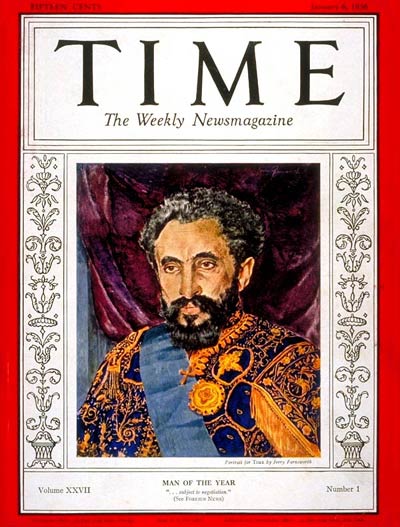In The Critic, James Jeffrey explains the late emperor and how he fell off his plinth in June of this year:
The Ethiopian emperor has fallen in leafy Wimbledon, but there’s more to his demise than meets the eye
In 1936, Emperor Haile Selassie gave a rousing speech to the League of Nations reminding it of its moral duty to defend Ethiopia which was being invaded and ransacked by Italy.
Despite the League entirely ignoring him — thereby dooming its proclaimed doctrine of collective security, which in turn hastened World War II — Selassie’s impressive performance recounting “the tortures inflicted upon the Ethiopian people,” while imploring the League to save Ethiopia from the “bonds of vassalship,” cemented his iconic international reputation. Time magazine named him “Man of the Year.”
All the while, and for the span of his reign from 1930 to 1974, the vast majority of Ethiopians lived in feudal conditions, knowing only vassalship. An authoritarian ruler, Selassie’s full title was “By the Conquering Lion of the Tribe of Judah, His Imperial Majesty Haile Selassie I, King of Kings, Lord of Lords, Elect of God.”
Among his retinue of lackies there was a man whose sole job was to wipe away the urine of the imperial dog Lulu after it relieved itself on the shoes of visiting dignitaries, according to Ryszard Kapuscinski’s The Emperor: Downfall of an Autocrat (a hotly contested point and accused of being invented by Kapuscinski; it sounds entirely plausible to me having seen how much Ethiopians, especially those with wealth and power, go in for being kowtowed to and waited on).
Civil rights and political rights were little known during Selassie’s reign — cementing an oppressive trend that continues to this day in Ethiopia — while he failed to adequately respond to famines in 1958 and 1973, dooming tens of thousands, possibly hundreds of thousands, of Ethiopians to their deaths.
Yet for all his faults — based on what I know and saw in Ethiopia, and on my gut instinct, I’ve never been a fan — Selassie opened up Ethiopia to the world and pushed to develop it. He introduced the country’s first written constitution in 1931, which while heavily in favour of the nobility, envisaged a transition to democracy. In Ethiopia today, he remains an inspiring figure for many, his image appearing all over the place. Among the Rastafari movement, Selassie is revered by many as the returned messiah and God incarnate.
Last week a group of Ethiopian diaspora in London got to give their judgement on the so-called Negusa Nagast, King of Kings, whose dynastic lineage reportedly stretched back to Emperor Menelik I, the offspring of King Solomon and the Queen of Sheba. In a Wimbledon park on June 30, a bust of Selassie was destroyed by a group of around 100 people, leaving a shattered plinth surrounded by rubble.




